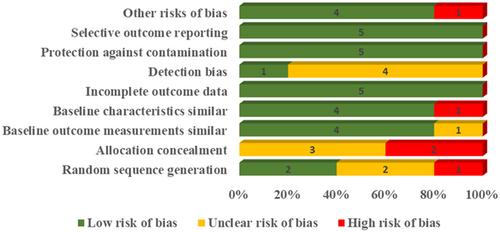Effect of pharmacological interventions for the treatment of people with post-COVID-19 condition: A rapid review
Abstract
Objective
Little is known about the treatment of post-coronavirus disease 2019 (COVID-19) condition (PCC). This article examines the effectiveness of pharmacological interventions for treating people with PCC.
Methods
We searched Medline, EMBASE, ClinicalTrials. gov, and the International Clinical Trials Registry Platform. Two independent review authors screened citations, extracted data, and assessed the quality of the included studies. Due to heterogeneity in participants, interventions, and outcomes, we synthesized data narratively. We assessed the certainty of evidence using GRADE (Grading of Recommendations, Assessment, Development, and Evaluation).
Participants
People with PCC.
Interventions
Pharmacological interventions include corticosteroids, ivabradine, and inhaled hydrogen.
Outcome Measures
Olfactory function, sinus tachycardia, respiratory function.
Results
We identified 5 completed studies and 41 ongoing studies. Oral corticosteroids and olfactory training had higher olfactory scores after 10 weeks (MD: 5.60, 95% confidence interval [CI]: 1.41 to 9.79). Patients allocated oral corticosteroid, and nasal irrigation demonstrated improved recovery of olfactory function compared with the control group at 40 days (median 60, interquartile range [IQR]: 40 vs. median 30, IQR: 25, p = 0.024). Patients allocated to topical corticosteroid nasal spray and olfactory training had improved recovery of olfactory function after 2 weeks (median 7, IQR: 5−10 vs. median 5, IQR: 2−8, p = 0.08). Participants allocated to ivabradine had a greater mean reduction in heart rate compared with participants randomized to carvedilol (MD: −4.24, 95% CI: −10.09 to 1.61). Participants allocated to inhaled hydrogen therapy had an improved vital capacity (MD: 0.20, 95% CI: 0.07 to 0.33), forced expiratory volume (MD: 0.19, 95% CI: 0.04 to 0.34), 6-minute walk test (MD: 55.0, 95% CI: 36.04 to 73.96).
Conclusions
The evidence is of low to very low certainty about the effect of all pharmacological interventions investigated for the treatment of people with PCC. There is currently a significant body of research underway that could expand the evidence to inform treatment decisions on pharmacological interventions for PCC.


 求助内容:
求助内容: 应助结果提醒方式:
应助结果提醒方式:


